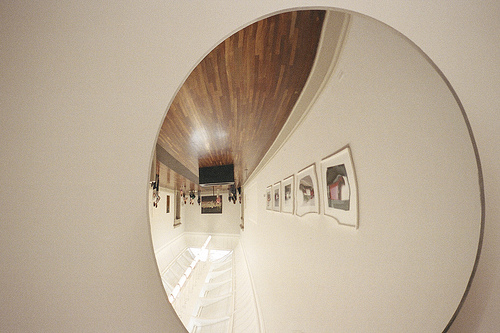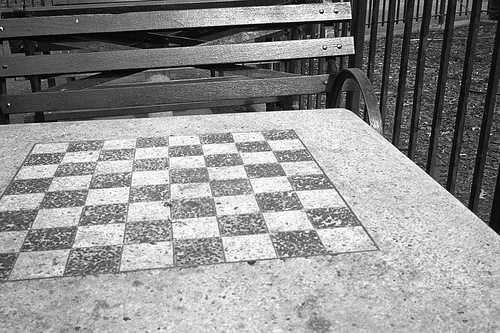A Brief Exposition of Contemporary Music Criticism: Part Two
To draw a line between the operational modes of the laylistener - the listen with no context other than the one they have constructed - and the critic - the supposedly trained individual - two points that most skeptics of the critic make will be explored: first, that the critic does not actually make/perform music, and because of this, they cannot discern whether or not music is good or bad; the second, is that good and bad are non-existent modes that the critic use to impose their taste onto the impressionable music listener. Both points, are duly true within the current critical-journalistic context, but ultimately revealed to be only partially so upon evaluation. Yes, through the embracing of audience and decidedly more relatable discourse the critical spectrum has become a space for gentrifying and selling “high brow” taste and opinions, but this angle is only true insofar as the listener purchases music under the guise of being genuinely interested in the objective nature of taste, then receding into the position of the victim, refusing the critical language as a means of preserving their own taste assertions. The upholding of one’s tastes and the refusal of the “policing” of it can be directly tied to the point of music writers not being music makers. The laylistener is correct to point this fact out (though there are exceptions), but it too is only correct on the surface. The laylistener sees critical discourse as being cheap and unfounded - essentially an elevated platform for a listeners like themselves. The laylistener assumes that music writer buys and experiences music the sames as them, but there is a large matter that is lept over with this argument.The laylistener ignores that - similar to their to their own assertions against the critic - they are not writers or trained in critical discourse. one can listen to, enjoy, and know things about music, but that does not equal a critic’s training in pattern recognition and prediction. Unbeknownst to most laylisteners, there is a strong mechanical thread that runs through a medium, an intrinsic aesthetic mode of operation that defines its very structure. Admittedly, this point is lost on the majority of music critics working today, but despite this stumble in form and function, the point stands to be true. Art in all categories is defined by its relation to everyday phenomena and events, proposed narrative. At the end of the music making process is a work, an object that exists amongst life, the laylistener’s daily routines and the surrounding subsequent events of the global community. The music release, through the stream of advertisements and sales, exist amongst society, offering its function like any object does. Unlike, the laylistener, the good critic cannot limit music’s function to the confined space of commerce and entertainment. Immediately upon its introduction to the world the music object submits to the narrative that is in place, as well as its creator’s biographical narrative. These parallel plots are the music object’s situational context, which in combination with the mechanisms of a work reveals - again upon inspection - the meaning of the work, its shape and definition, and its aesthetic - not economical - value. The critic’s value comes from their being able to understand and employ these modes, and to then use the written language to not just explain, but to engage the work (and its context directly. This is, in essence, an active push-and-pull, deconstruction and assertion of the work in “real” space, the work stabilizing and fitting into the objective framework.

This idea of framing an object in objective space insists that there is a strong sense of order and purpose from a work, which must be matched by the critic’s intention to see to it that the framework is obeyed or broken laterally, logically. Free-expression in this way becomes a thing of the personal, held far away from critical discourse and the objective narrative. To state the pint firmly, to be “good” an artist must know their context and craft a work accordingly. As for the wanting to usurp and change the framework, the artist must do so with the available the rules of the medium’s language system and mechanical structure.
The main point here is that art and its world is firmly utilitarian. Discourse as a mechanism exists solely to attack an object or occurrence, to smooth out the standing misunderstandings or uncovered avenues. Art is text-based and bound, textual and full of codes. Discourse on an “elevated” level is then necessary to uncover the intent of the work, the path that it unduly carves out upon release. To have no discourse with a work assumes it to be a blatant and obvious work - there is nothing to talk about. If the work is truly evident and not just ignored, then this is good, this is the mark of a clear and well-functioning work. It simply is, without exhaustive interpretation and prodding. Discourse can then be defined as a tool for gaining understanding of an object’s being an context. The word context here encompasses the text that is situated concurrently with the object. If the object is correctly positioned amongst the context of current societal events an understanding the work then needs no explanation.. Which, there are cases where the current group is unaware of their own context, thusly being unable to understand the work which correctly appropriates the space. A work that locks into place with the narrative of the current times, the tastes of the laylistener which are contextually influenced as well as the standards of the medium satisfies its function and gains the critics’ approval, again discourse isn’t needed. To return to the laylistener’s allegations of the critic being an opinionated fan with a platform, the laylistener must understand that the critic exists to check and map the form, not to cater to the whims of the casual listener: music criticism is made up of judgement calls. In direct opposition to the critic’s stance, the laylistener exists only to be swept away by their experiences being, the music object speaks about them, and the critic explains their objective relationship to the work.
The laylistener is but a mirror to the artistic and critical process, a rubric for the standing boundaries of artistic form, totting the contextual narrative view. Both the artist and the critic must keep the scale normative understanding in mind, not for the sake of the confined view, but to know to what ends an art can exist, a baseline for construction - in the same way that a shirt for the average human must have an opening for two arms, a head and a torso, the music work must exist within the normative architectural space. That is not to disparage avant-garde music but to say that music must exist within the frame of human hearing, not necessarily understanding, it must inhabit the same physical and contextual moment. With this said, music does not have to utilize known genres or harmonic structures, it need only excavate a space and meditate on its spatial-sonic makeup, constructing within that space, reifying it. It is in this space where the laylistener exists and the critic extracts meaning.
The introduction of literary concepts and theories to film criticism, saw a leap in terms of the meaning that writers were able to extract from the films that they were writing about. Prior to those modes being introduced, film had primarily existed as a series of meandering experiments in form and technological prowess. Music, similarly, sits in a place of limited modality, stiff from having been closed in by consumer culture and superimposing histories and traditions. In its current state one could see that music is divided into a few immovable and heavily influencing sectors. The two most prominent - pop and classical - take up the most space, whelming the space for innovation and creative production. Pop, on a basic and upfront level, blocks the productivity of music because of its need to please its community, whereas the classical tradition is steeped in a hugely constructed history, taking up all of the academic sector. Returning to the introduction of literary modes, the inclusion of sociological understanding and historical mapping would work well for a medium as code-bound as music. The break the constructed form is to be avant-garde, there is no progression in this. What does it mean for a medium to be so confined to singular ways of thinking? To be bound to only pleasing the immediate moment and the spectator.

The argument at hand is not that there is a recognized controversy amongst current music academics, but that there is a major flaw in critical analysis that is unrecognized. In film theory, for example, there are clear rules of engagement that direct a critic's word choice and method of evaluation. The theories reach into disciplines outside of film's scope as a means of better interacting with the possibilities of the film-audience experience. Christian Metz in The Imaginary Signifier, uses the Freudian idea of perception through mirror images to define what is perceptual about film. Metz employs the term “all-perceiving subject” to define film as a mirror image of human consciousness. Metz discusses the relationship between film and the audience through spectator identification – the person identifies with him or her self through subjective experience with the film. In short, music criticism is vague just as the signifiers of music itself are ethereal, whereas film criticism uses more clear organized methodology just as the tools that film utilizes are direct, visual and undeniable. If music critics were to apply a more organized, concrete theory to music, the critic would be able to more easily uncover what the musician is attempting to project towards the audience while also figuring out what the audience actually receive and latch onto emotionally and consciously. The evaluating of one's listening experience is not a matter of what is imagined versus what is, but a case of deciphering the intention behind what is imagined.
Part one of this piece can be found here.